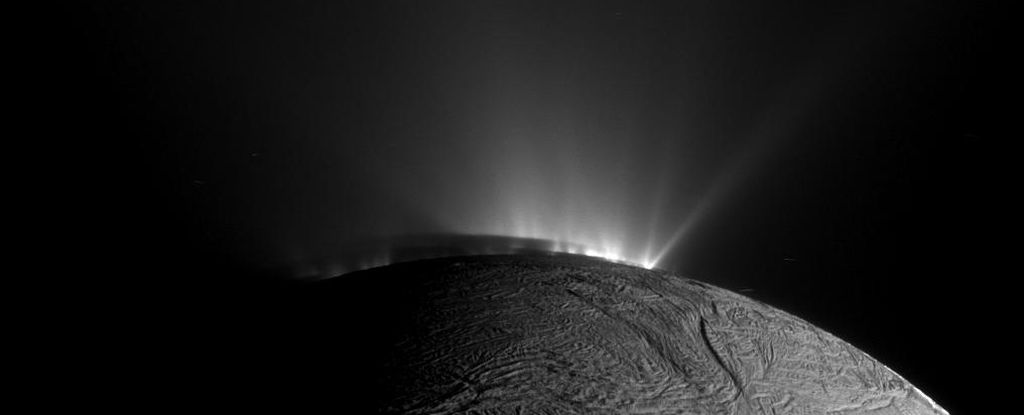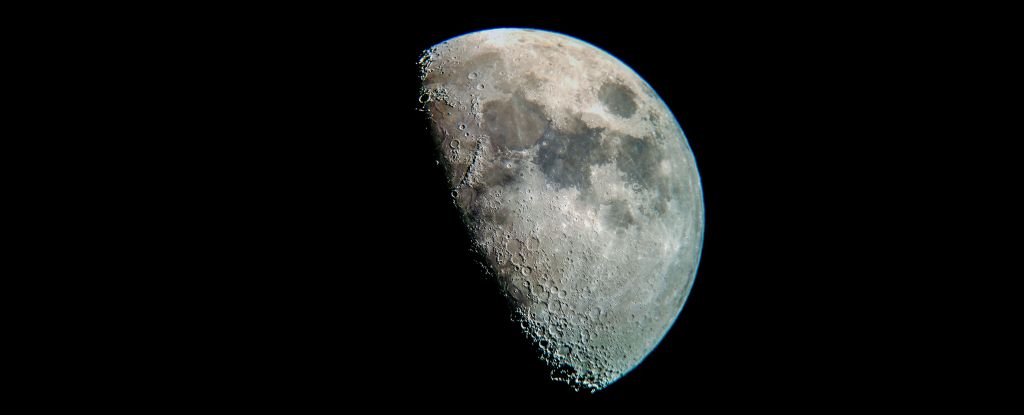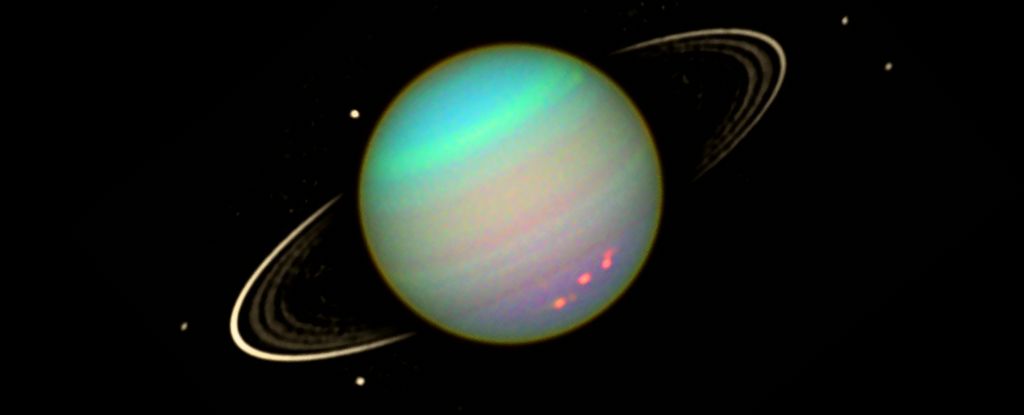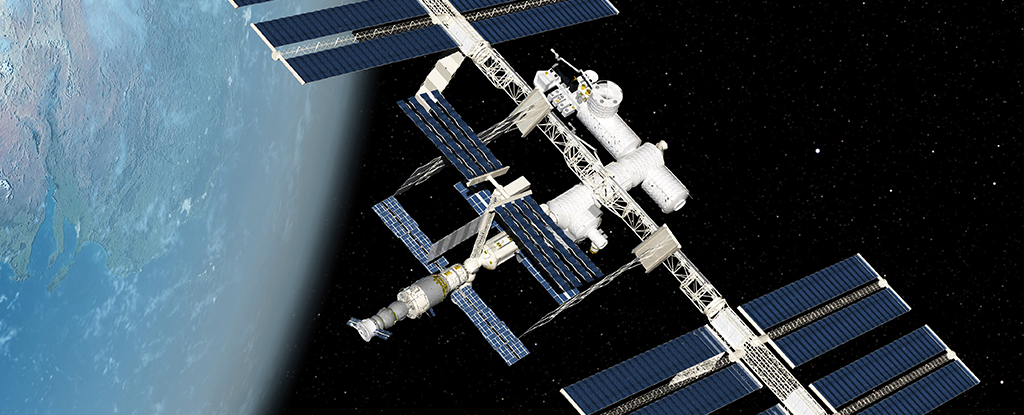Cronian moon Enceladus doesn’t look like much. It’s kind of monochrome and small, paling in comparison with Saturn‘s big showy rings and giant hexagon.
But, as many Solar System objects make clear, appearances can be very deceptive. Enceladus has a lot more going on than an initial glimpse would indicate. A new analysis suggests that the ice world is harboring way more organic molecules than previous findings suggest.
A closer look at the data from the Saturn Cassini probe has revealed that Enceladus spews out molecules like methanol, ethane, and molecular oxygen from geysers welling from liquid water deep below its frozen shell.
It’s a discovery that leans even more heavily into the notion that the moon could potentially be supporting some sort of biochemistry, or even communities of microbes, in its global ocean – adding support to calls to send a dedicated mission to Enceladus in the hopes of finally finding extraterrestrial life.
“The results presented here indicate that Enceladus is host to a multiphasic and compositionally diverse chemical environment that is consistent with a habitable subsurface ocean,” write a team led by astrobiologist Jonah Peter of Harvard University and the NASA Jet Propulsion Laboratory.
“The [chemical] species identified in this work also suggest that this ocean may contain the necessary building blocks required to synthesize compounds important to the origin of life.”
Most of what we know about Enceladus comes from the Cassini mission, which explored Saturn and its satellites from 2004 to 2017. We didn’t know much about the tiny frozen moon before that time; but then the probe detected, and flew through, plumes of mist erupting from cracks in Enceladus’ icy surface, revealing the presence of a liquid ocean roiling below.
Subsequent analysis of data collected by Cassini’s Ion and Neutral Mass Spectrometer (INMS) instrument revealed the presence of organic molecules in those plumes – water, carbon dioxide, methane, ammonia, and molecular hydrogen.
But the INMS has a low mass resolution, making identification of the less abundant species difficult, since there’s quite a wide range of possible combinations that could fit the data. So the full compositional profile of the plumes has remained an open question.
Peter and his colleagues, planetary scientist Tom Nordheim and astrobiologist Kevin Hand of Jet Propulsion Laboratory, took another tilt at the data from the IMNS. They used statistical modeling to compare the data to a large library of known mass spectra to identify what could be producing the patterns seen in the Cassini data.
Their results confirmed earlier findings while also revealing a larger suite of organic molecules than first identified, including hydrogen cyanide, acetylene, and propylene; compounds implicated in prebiotic chemistry – the chemistry that leads to the formation of life.
We have some pretty compelling evidence that Enceladus has an active hydrothermal environment. It’s on an orbit around Saturn that stretches and compresses the moon, heating its interior. That thermal energy can seep out through vents on the ocean floor, providing an environment that’s hospitable to life, even so far from the Sun. We know that, because it happens in Earth’s deep oceans.
We can’t know at this point if what we’ve detected so far means there’s life on Enceladus. It could just be a bunch of molecules, coincidentally hanging out. But the exciting thing is that it could be really significant. And we can perform laboratory experiments here on Earth to try to narrow down whether Enceladus is inhabited or not, but really, the only way we’ll ever know for certain is to explore further.
There are currently some proposed Enceladus missions, but nothing has been nailed down quite yet. Every drop of evidence, however, brings us a step closer to visiting that alien moon, and looking for those alien bacteria.
“Our results,” the researchers write, “indicate the presence of a rich, chemically diverse environment that could support complex organic synthesis and possibly even the origin of life.”
What the heck are we waiting for?
Their findings have been published in Nature Astronomy.





